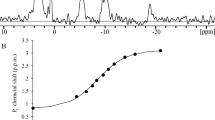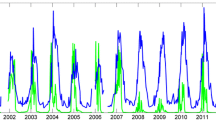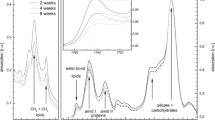Abstract
Temperature dependent changes in the mode of energy metabolism and in acid-base status were studied in the range from −1.7 to 26 °C in two populations of Arenicola marina collected in summer as well as in winter from intertidal flats of the North Sea (boreal) and the White Sea (subpolar). Extreme temperatures led to an accumulation of anaerobic end products, indicating the existence of both a low and a high critical temperature, beyond which anaerobic metabolism becomes involved in energy production. In summer animals from the North Sea the high critical temperature was found at temperatures above 20 °C, and the low critical temperature below 5 °C. Latitudinal or seasonal cold adaptation lead to a more or less parallel shift of both high and low critical temperature values to lower values. Between critical temperatures intracellular pH declined with rising temperature. Slopes varied between −0.012 and −0.022 pH- units/°C. In summer animals from the North Sea, the slope was slightly less than in White Sea animals, but differences appeared independent of the season. However, slopes were no longer linear beyond critical temperatures. A drop in intracellular pH at low temperatures coincided with the accumulation of volatile fatty acids in the body wall tissue of North Sea animals. A failure of active pHi adjustment is held responsible for the reduced ΔpHi/ΔT at temperatures above the high critical temperature. Extracellular pH was kept constant over the whole temperature range investigated. The ability of North Sea animals to adapt to temperatures beyond the critical temperature is poor compared to White Sea specimens. The larger range of temperature fluctuations at the White Sea is seen as a reason for the higher adaptational capacity of the subpolar animals. A hypothesis is proposed that among other mechanisms critical temperature values are set by an adjustment of mitochondrial density and thus, aerobic capacity.
Similar content being viewed by others
Author information
Authors and Affiliations
Additional information
Accepted: 20 August 1996
Rights and permissions
About this article
Cite this article
Sommer, A., Klein, B. & Pörtner, H. Temperature induced anaerobiosis in two populations of the polychaete worm Arenicola marina (L.). J Comp Physiol B 167, 25–35 (1997). https://doi.org/10.1007/s003600050044
Issue Date:
DOI: https://doi.org/10.1007/s003600050044




